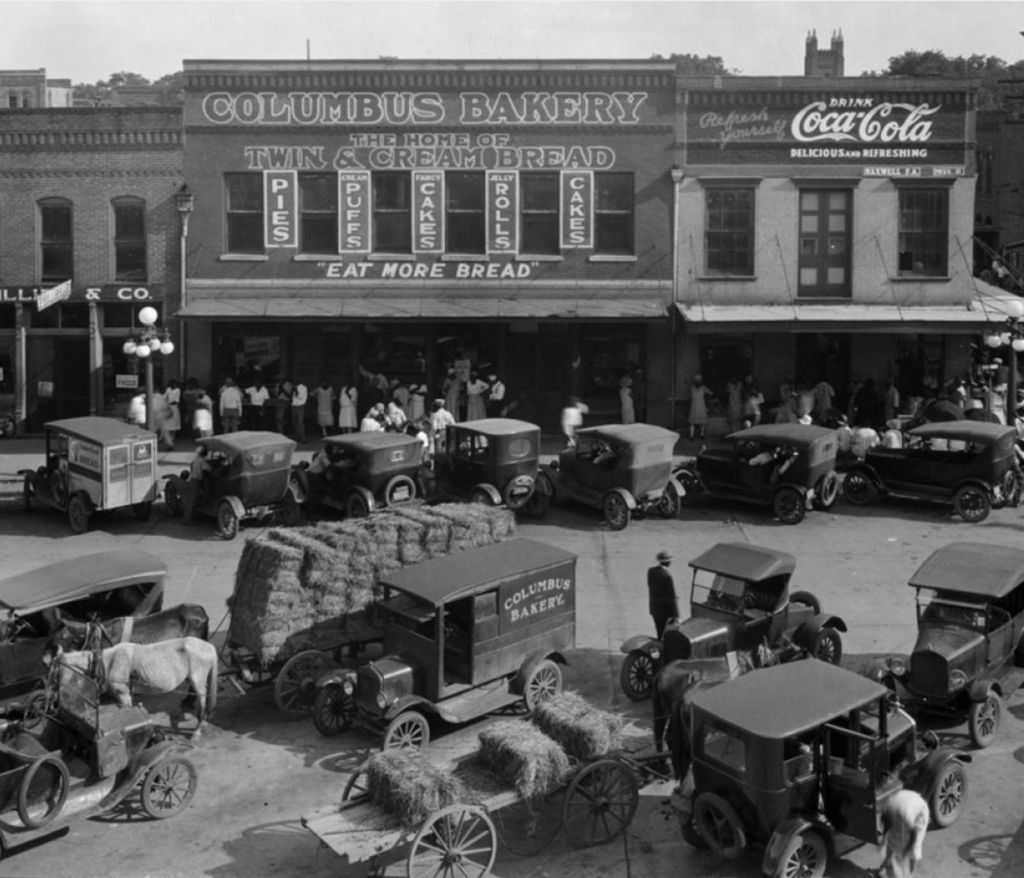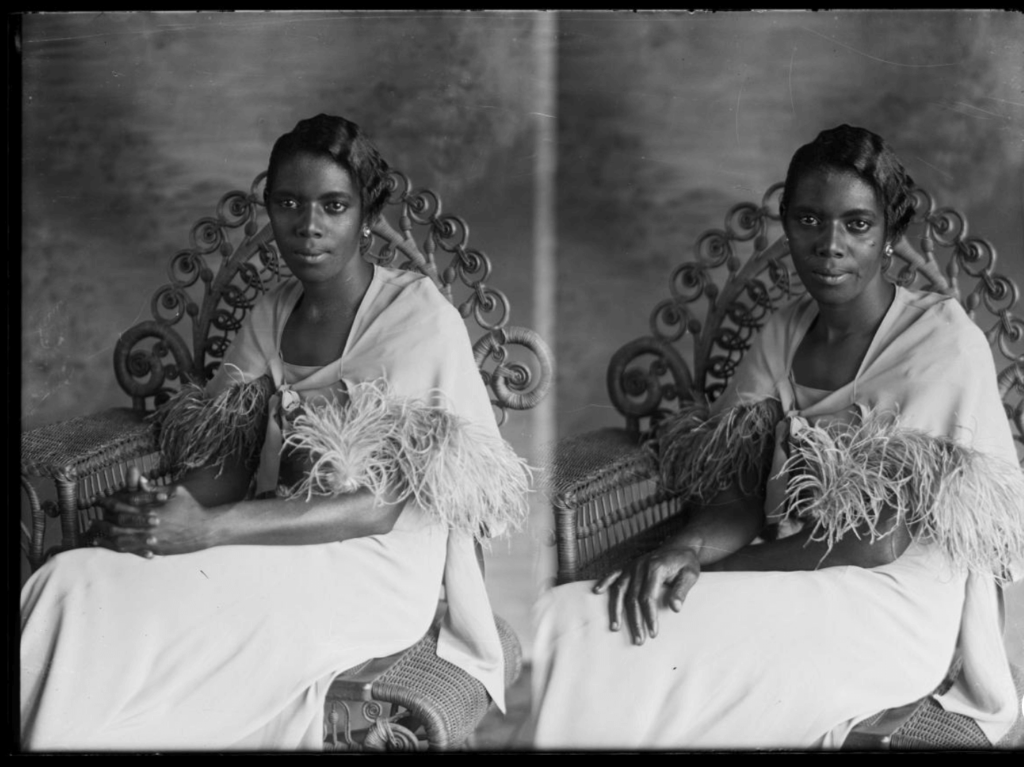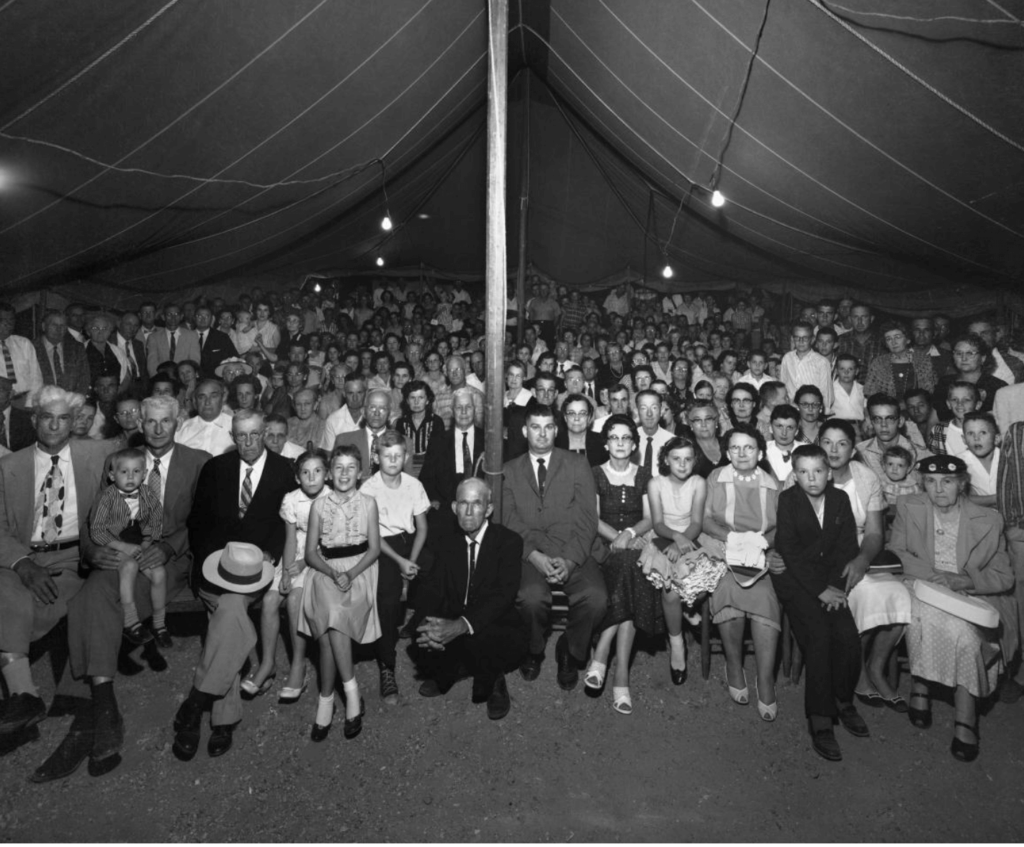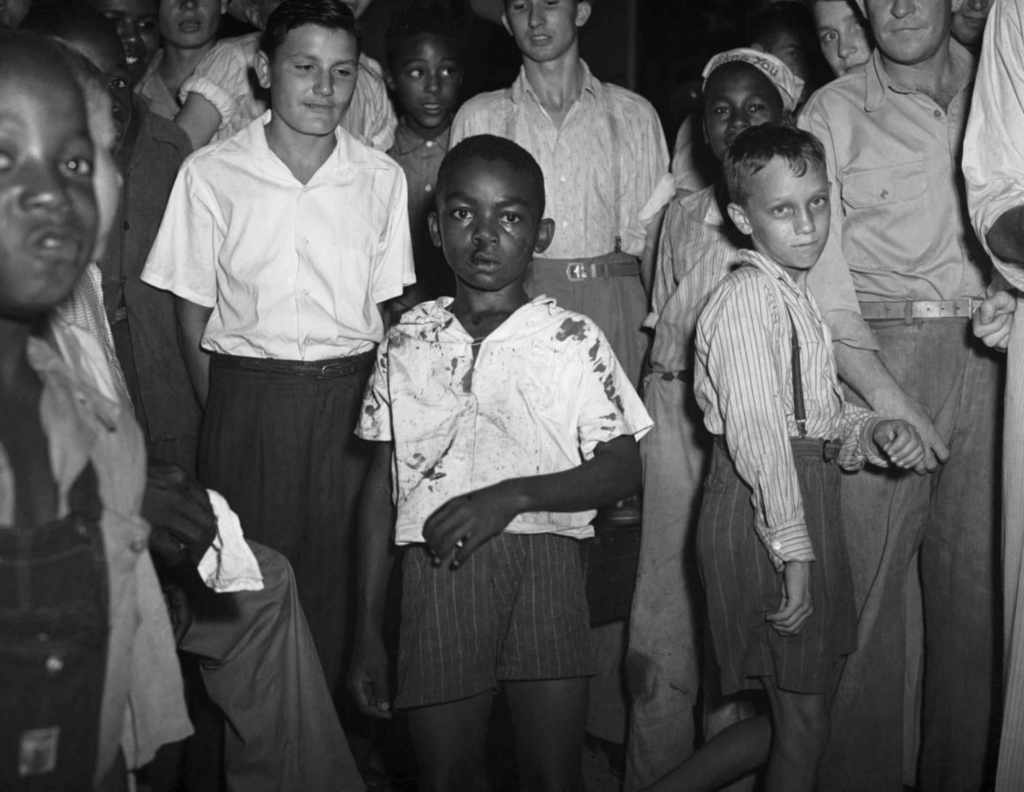Possum Town in Black and White
Mississippi photographer O. N. Pruitt documented the beautiful and the horrible

—Photograph by O. N. Pruitt, courtesy of Southern Historical Collection, University of North Carolina at Chapel Hill Libraries
Photographer Otis N. Pruitt bore witness. Through the lenses of heavy cameras balanced on tripods, he captured truths about the Jim Crow South from the early 1920s to 1960, in a time when Black and white Baptists were immersed in the same muddy river on Sundays and then returned to segregated streets with restrooms labeled Ladies, Gentlemen, and Colored, with whites-only theaters and drinking fountains, where Black people feared that at any moment they could be chased down and lynched.
Pruitt was no Dorothea Lange, hired by the Works Progress Administration to blow through the South, an outsider creating pictures for posterity. He was embedded. He lived in Columbus, Mississippi, then a town of about 10,000 people, half Black, half white. His wife and children lived there. He was a devoted member of the local Kiwanis Club, not missing a meeting in 19 years. He attended the Methodist Church and saw plays in which children performed in blackface.
He was the town’s unwitting biographer, its unofficial but ubiquitous photographer. He did it to make a living but also because he was addicted to photography. His grandson, Thomas Caldwell, in 2001, said that all Pruitt cared about were fishing and taking pictures. When he died in 1967, he left behind 88,000 negatives, some on glass, some on highly flammable nitrate film, some on more modern acetate film, all of them moldering. They were haphazardly stored in his old photography studio when three white college students—boyhood friends from Columbus, which locals called Possum Town—came upon the collection and began a 30-year effort to preserve it and make it public.
One of them, Berkley Hudson, then a budding photographer and journalist, became particularly obsessed, and it was he who eventually wrote the just-released book O. N. Pruitt’s Possum Town: Photographing Trouble and Resilience in the American South, published by the University of North Carolina Press in partnership with the Center for Documentary Studies at Duke University. A traveling exhibition sponsored by the National Endowment for the Humanities opened in Mississippi on February 3.
“Before seeing many [of the photographs], we realized this was the history of our part of the American South, in visual form,” writes Hudson, associate professor emeritus of journalism at the University of Missouri. “As we waded into the images, prints and negatives, we realized this was a photobiography of a place called Mississippi.”
Unlike most white photographers at the time, Pruitt created gorgeous portraits of Black people, often seated in the same wicker fan back chair and holding some of the same props as whites. In those photos, people chose what they wore, how they did their hair, how they sat or stood.

—Photograph by O. N. Pruitt, courtesy of Southern Historical Collection, University of North Carolina at Chapel Hill Libraries
“It’s nice to see how people look when they have some control over how they present themselves,” says Tom Rankin, professor of the practice of art and documentary studies at Duke University and former director of the Center for Documentary Studies. “They’re going to the studio as they would like to be seen.”
Pruitt’s photos on the streets, in farm fields, and in church graveyards provide a less-staged documentation of life at the time. Group photos center on the most powerful people, usually white men, with Black people around the periphery, if included at all. His photographs of lynchings and executions, KKK rallies, and Black tornado victims laid out in the sun present a pragmatic vision of intimidation and violence, one race against another.
“He was a conservative white man,” says Hudson. “He believed that Blacks have a place in society, but it’s not equal to whites.”
Yet unlike many photographers at the time, he allowed Black people dignity before the lens.
“Even though Mr. Pruitt was very conservative, he took good portraits of Black people, and that’s not something you think about a white photographer in the South,” says Deborah Johnson, a novelist who lives in Columbus and who served as moderator on a panel about the collection. “Not as ‘these poor people.’ He showed them in the same way as he showed the whites.”
His photo of Oscar West, for example, shows a young Black man in a darned leather jacket, his shoe soles worn thin, his gaze confident as he slouches on a barrel, holding a broom. He worked as “the cleaning boy” for the Brown Buick-Cadillac Company, and as a “manservant” for the Floyd Brown family, according to Hawley Knox Brown. They called him “Humpy” because of a problem with his spine, yet Pruitt had posed him such that you can’t see the malformation from the photo.

—Photograph by O. N. Pruitt, courtesy of Southern Historical Collection, University of North Carolina at Chapel Hill Libraries
Only a few of the pictures have given up their stories. Most remain mysterious. Did the Black congregation have to wait until the whites were done before they could be immersed in the muddy Tombigbee River, or were they baptized simultaneously, in the same flow of water? Did Pruitt photograph only those who could pay him, or was he so enthralled with the technology that he would take photos of anyone? A tattered notebook in the handwriting of his wife, Lena, shows that he charged women in a group graduation photo for the Mississippi State College for Women $2.50 ($24.32 in today’s dollars) for each print, selling 72. He bartered for chickens, eggs, and fish during the Great Depression. Law enforcement officials and insurance companies hired him to document accidents, fires, storms, and worse.
In 1935, the sheriff called Pruitt. “Come quickly, Pruitt was told; there’s been a double lynching,” Hudson writes in Possum Town. “With that, Pruitt, who kept his camera equipment at the ready in his car, sped on paved roads and then gravel ones. Eight miles south of town, in a churchyard, he found lynched from an oak tree the bodies of young ‘Negro farmers,’ as described by Associated Press accounts published around the nation, including in the New York Times. Pruitt took pictures of the bodies of Bert Moore and Dooley Morton.”
The men had been accused of harassing a white woman. Their bodies hung for hours as people gawked. Most chillingly, a white man crouches, clutching the lynched men’s trousers so they don’t swing and make Pruitt’s slow exposure photograph blurry. The photo was used in the Black-owned newspaper the Chicago Defender and printed on postcards, even though the latter was made illegal in 1908. No one was ever charged in the murder.
In another photo, James Keaton, arms and legs belted to his body, a noose already around his neck, looks to Pruitt’s camera as six white men pose alongside him on the gallows and another 19 wait beneath to have their photo taken with his body.
The ethics of showing photos of intimidation and violence presented challenges in both the book and the exhibition. Columbus resident Janice Ellis, who is Black, was drawn into the exhibit by the beautiful multiracial scrims hanging outside the Columbus Arts Center, where the exhibit first opened. She and her husband enjoyed looking at familiar buildings in long-ago incarnations, and the faces, clothing, and cars of bygone residents. They did not look carefully at the sign outside a curtained-off area. “Deadly Divisions,” it read. “Parental guidance is suggested in the next gallery. This section of the exhibition includes discussion and depictions of racial violence, including lynching. If you prefer not to view this content, please continue to the next section.”
“When I got inside, I was shocked and felt hurt,” Ellis says. She found Hudson and told him how upsetting the photos were. That night, though, she called an old college friend, Edgar Brady, a pastor at an integrated church in Ohio. To her surprise, he said it was important for today’s citizens to bear witness. “If you visit the Holocaust Museum you need to see what happened to those people,” he told her. “Black people and white, too, need to see this and we need to talk about it. It’s an ugly part of history, but it’s the truth.”

—Photograph by O. N. Pruitt, courtesy of Southern Historical Collection, University of North Carolina at Chapel Hill Libraries
In 2005, the collection became part of the Southern Historical Collection at the University of North Carolina’s Wilson Library, where it is being preserved and scanned so that researchers and the public can look at the images online, sharing the photograph’s messages while protecting the originals.
“This collection underscores the power of photography to capture the moment both in time and in emotion,” says Bill Ferris, associate director of the Center for the Study of the American South and former chairman of the National Endowment for Humanities. “Photography is a deep look at our history as a family, as a community, as a nation, and these photographs clearly allow us to pull back the veil and see what life was like in a single community. This collection is a touchstone for both the South and the nation, and future generations will continue to mine it in ways we can’t even imagine.”
HUMANITIES, Winter 2022, Volume 43, Number 1
Published on March 23, 2022
